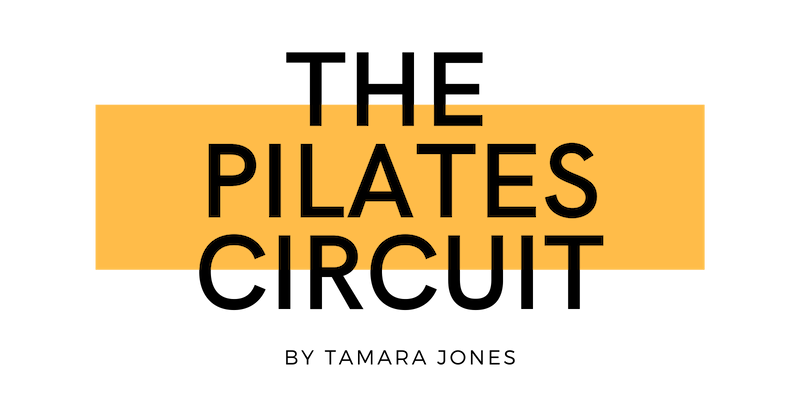Pilates Breathing Technique Explained (& Why It Matters)
The intricacies of Pilates breathing enhance every aspect of your Pilates journey.
Common Breathing Techniques in Pilates
There are two primary breathing techniques in Pilates: lateral breathing and diaphragmatic breathing. These techniques form the foundation of mindful breathing throughout your Pilates routine.
Lateral vs. Diaphragmatic Breathing
Lateral breathing involves expanding the rib cage to the sides while keeping the abdominals engaged.
Diaphragmatic breathing focuses on deepening the breath by engaging the diaphragm, allowing the lungs to expand fully.
What Is The Best Pilates Breathing Technique?
Many Pilates practitioners find that lateral breathing complements the movements seamlessly, promoting core engagement and stability.
The Mechanics of Lateral Breathing in Pilates
Lateral breathing encourages the ribs to expand outward, creating space for the breath to flow into the sides and back of the ribcage.
This expansive breath pattern supports proper alignment and enhances the efficiency of each movement.
Step-by-Step Guide to Pilates Breathing
Pilates breathing is an essential component of the Pilates method.
Find a comfortable seated or supine position and focus on aligning the spine and engaging the core.
Inhale deeply through the nose, expanding the rib cage laterally.
Exhale completely through the mouth, engaging the abdominals to support the movement.
Why Is Good Breathing Technique Important?
Mastering Pilates breathing influences core stability, oxygenation, and overall performance.
Enhancing Core Stability and Control
By synchronizing breath with movement, Pilates breathing activates the deep stabilizing muscles of the core, promoting greater control and precision in each exercise.
Improving Oxygenation and Performance
Proper breathing techniques optimize oxygen intake, fueling the muscles and enhancing endurance and performance throughout your Pilates session.
Applying Pilates Breathing in Exercises
Integrating Pilates breathing into your exercises can amplify their effectiveness and deepen your mind-body connection.
Exercises to Practice Pilates Breathing
Incorporating breathing into movements such as the Hundred and Roll-Up and movements involving spinal articulation like the Cat-Cow stretch or the Swan Dive can help synchronize breath with movement, enhancing core engagement and promoting relaxation.
The Hundred: inhale deeply for five counts and exhale for five counts while pumping the arms.
The Roll-Up: inhale to prepare at the bottom, and exhale to initiate the movement as you roll up, articulating through the spine.
The Holistic Benefits of Pilates Breathing
Pilates breathing promotes holistic well-being, integrating physical, mental, and emotional aspects to achieve balance and vitality.
Beyond the Mat: How Pilates Breathing Influences Daily Life
Pilates breathing extends beyond physical exercise, offering holistic benefits that nurture both body and mind. Synchronizing breath with movement fosters a deeper mind-body connection, enhancing proprioception and spatial awareness.
Mindful breathing fosters a sense of calm and relaxation, reducing stress and tension.
Embracing Pilates Breathing for Enhanced Well-being
Pilates breathing serves as a foundational element in promoting holistic well-being, integrating physical, mental, and emotional aspects to achieve balance and vitality.
Experience personalized Pilates training at The Pilates Circuit. With private 1x1 Pilates in New York, we craft sessions tailored to your needs, focusing on strength, flexibility, and balance.
Start your journey today with an intro session and work one-on-one with our skilled instructors. Visit our Chelsea Private Pilates Studio or NOMAD Pilates Studio to experience a space designed for focus and growth.
FAQs
-
Yes, private Pilates training is highly beneficial for beginners as it allows for personalized instruction and guidance tailored to individual needs. A private instructor can introduce beginners to the fundamentals of Pilates, including proper alignment, breathing techniques, and foundational exercises.
Private sessions offer a safe and effective way for beginners to learn Pilates principles and develop a strong foundation before progressing to more advanced techniques.
For this reason, most studios recommend starting with privates before progressing to groups.
-
Pilates is a low-impact exercise method that focuses on strengthening the core muscles, improving flexibility, and enhancing overall body awareness and control. Pilates exercises are performed with precise movements and controlled breathing patterns, emphasizing quality of movement over quantity. Some benefits of Pilates include improved posture, increased muscle tone and strength, enhanced flexibility, and reduced risk of injury.
When you know how to move slowly and from the core, you learn how to control everything else.
-
Pilates and Yoga have some similarities, but they are not the same exercise form. Both focus on mind-body connection, breath control, and movement.
However, Pilates emphasizes core strength, stability, and controlled movement, while Yoga focuses more on flexibility, balance, and spiritual aspects.
Fundamentally, Pilates is a workout, while Yoga is a spiritual practice.
Meet Tamara – Your Pilates Expert
Hi! I’m Tamara, a Certified Pilates Instructor and founder of The Pilates Circuit in NYC. With 9+ years of experience, I specialize in results-driven, athletic Pilates to improve posture, core strength, and overall wellness. Whether you're recovering from diastasis recti or leveling up your fitness, I’m here to guide you every step of the way!
Find us on Instagram:


